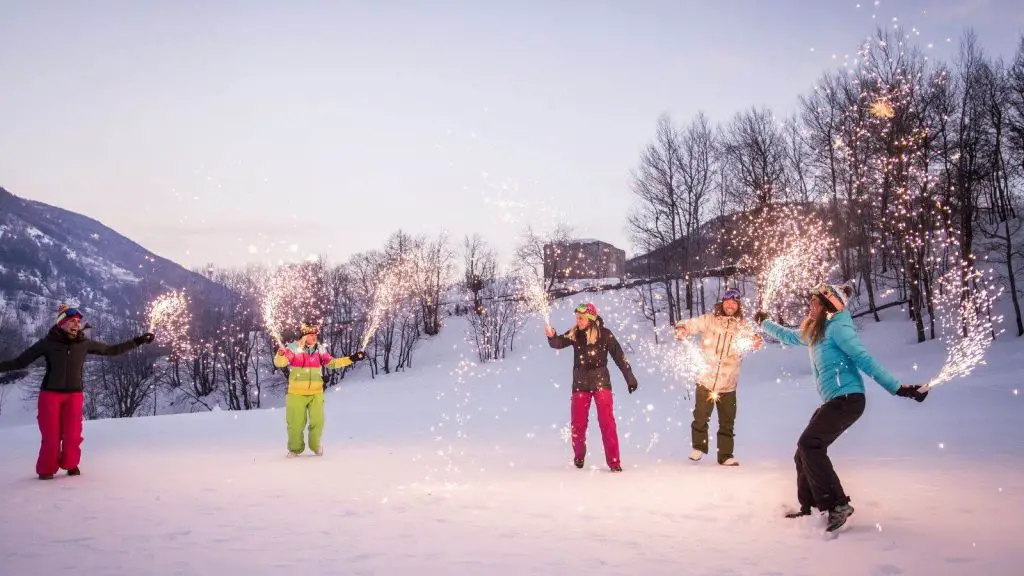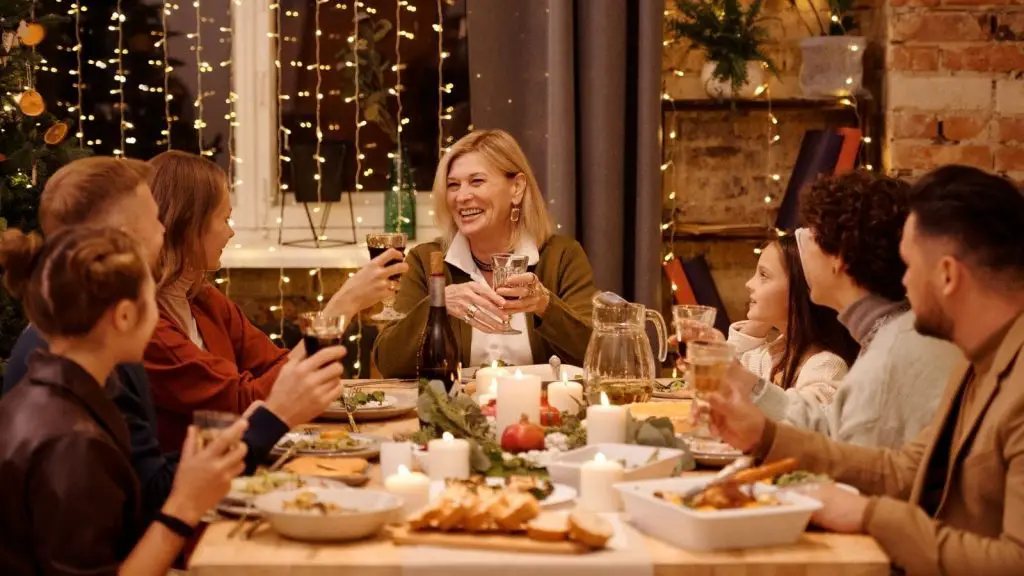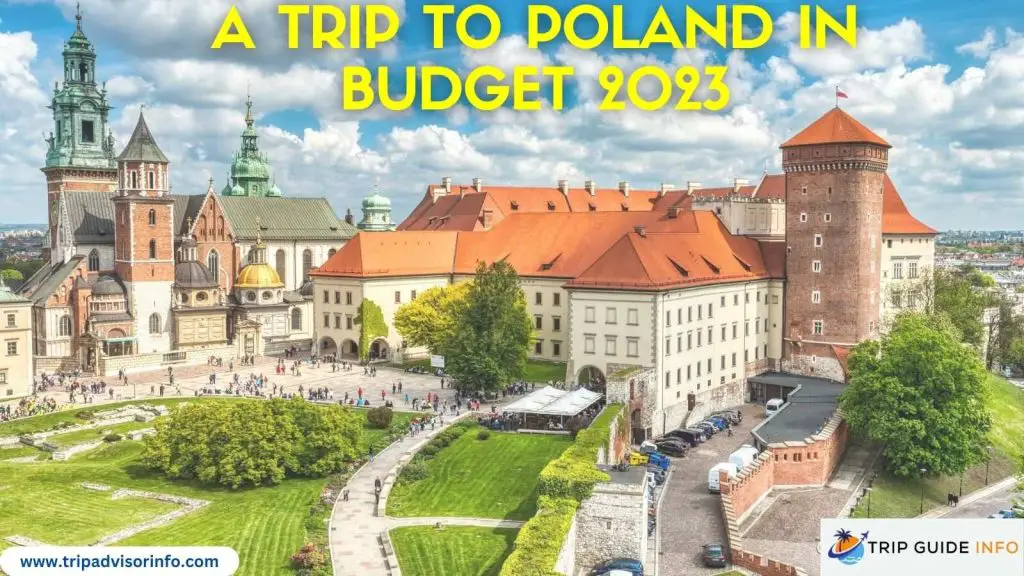Some countries have longstanding traditions that are carried out each year, while others may adopt new customs depending on the current events or trends. We will get into the 5 Polish new year traditions you didn’t know about. But, first we need to discuss the factors that affect a country’s traditions.
Poland Geographical Statistics
Poland is a country located in Central Europe. It has a population of over 38 million and covers an area of 312,679 square kilometers.
Poland borders Germany to the west, the Czech Republic and Slovakia to the south, Ukraine and Belarus to the east, and Lithuania and Russia to the north.
The capital of Poland is Warsaw, and the official language is Polish. The currency is the Polish złoty. Poland has a long history and culture that dates back centuries. It is home to many beautiful castles and cathedrals and is the birthplace of Pope John Paul II.
Poland is also well known for its delicious food, including pierogi, kielbasa, and Bigos. Tourists from all over the world come to Poland to experience its unique culture for themselves.
The climate in Poland is cool and temperate

Poland’s climate is cool and temperate, with average temperatures ranging from 10-15 degrees Celsius. The country experiences four distinct seasons, with cold winters and hot summers.
Poland is located in the Northern Hemisphere, so the amount of daylight varies throughout the year. In winter, the days are shorter, and the nights are longer. In summer, the reverse is true.
Poland experiences a fair amount of precipitation, with rainfall occurring throughout the year. The rainfall varies from region to region but typically ranges from 20-30 inches per year. Snowfall is also common in winter, especially in the mountains.
Despite its cool climate, Poland is a beautiful country with various landscapes, including forests, mountains, and lakes.
Poland – A popular tourist destination in winter
Poland is a country with a rich history and culture, which has something to offer tourists all year round. However, it is especially popular as a winter destination, when visitors can enjoy its festive Christmas markets and snow-covered landscapes.
Poland has a wide range of accommodation options to suit all budgets, and its cities are well-connected by an efficient public transport network. Poland has also recently become known for its lively nightlife and vibrant music scene.
As a result, it is no surprise that Poland is increasingly becoming one of the most popular tourist destinations in Europe. Polish people are known for their traditions, and the New Year is no exception.
Every January 1st, it’s tradition to ring in a special day with friends or family members by celebrating food-related events like frying pans on roofs of houses so they can toast over them later during dinner time!
There might also be more traditional celebrations happening at this point, like parents giving gifts that have been prepared especially courtesy of their efforts throughout all twelve months just beforehand (think: Migas).
Different Regions Have Different Traditions
Poland is a big country, and as such, it has many different regions. Polish new year’s traditions are varied across these regions.
Some regions eat specific foods during new year celebrations while others have less well-known traditions like visiting graves of deceased relatives. Let’s take a look at 5 interesting Polish new year traditions you probably didn’t know about!
First Foot

The first visitor to your home on Polish New Year’s Day is known as the first foot and is thought to bring good luck throughout the year. This can be anyone, so long as they’re at your house before midnight.
The tradition originated in Ireland, where people would place food outside their doors for a household’s first visitor—and it was believed that whoever picked up those leftovers became their first foot into the next year.
In Poland, however, leftover food isn’t used for fortune-telling purposes; instead, families will often have a special dinner or open presents after midnight.
In some regions of Poland, such as Podlasie and Masovia, there are additional traditions: People will knock on neighbors’ doors with sticks or stones (instead of visiting them) or make loud noises by banging pots together until someone comes out to join them in celebration.
Christmas Eve Dinner/Wigilia (Oplatek)

Wigilia is Christmas Eve dinner and a Polish tradition unlike any other. In Poland, it’s said that when one sits down to Wigilia, you must place an Oplatek (an edible wafer) on your plate before taking a bite of anything else.
There are many interpretations of why Oplatek must be eaten at Wigilia; however, most relate to some sort of family history or Polish folklore. Whatever its origins may be, eating Oplatek is still very much alive in Polish culture today.
Oplatek can also be used as a toast—the person who receives an Oplatek after being wished Sto lat! (Polish for One Hundred Years!) has to buy wine for everyone present at the table.
Since Poland’s cuisine is very similar to other European countries, Christmas Eve dinner in Poland is a no-frills meal. It’s centered around fish or kiełbasa, potatoes, and sauerkraut.
The traditional Polish dessert for Christmas Eve is called Makower (poppy seed cake). To round out your Polish Christmas Eve feast, you might also serve pierogi (dumplings) with mushroom filling.
Some parts of Poland also have special dishes for lunch on Christmas Eve. In Silesia, it’s szynka z kapustą i grzybami (ham with cabbage and mushrooms), while in other regions it could be barszcz czerwony z uszkami (beetroot soup with dumplings).
The First Day of the New Year (Nowy Rok)
The Polish new year, Nowy Rok (pronounced noovy rok), is celebrated on 1 January. Before midnight comes, people gather with family and friends to share a glass of alcohol and wish each other health and prosperity for another year.
Among Poles, there are traditional foods that go along with Nowy Rok as well: be it pierogi, roasted piglet, or pączki (pronounced pontskee).
Eating 12 grapes at midnight for good luck in the new year
Eating 12 grapes at midnight is a popular New Year’s tradition in many countries. This is because it is believed that eating 12 grapes will bring you good luck in the new year.
Many people also believe that eating grapes on New Year’s Eve will help you to avoid bad luck in the new year.
There are many different ways to eat your grapes on New Year’s Eve. Some people eat them whole, while others prefer to cut them into small pieces.
Some people even add a little sugar to their grapes to make them even sweeter. No matter how you eat your grapes, remember to eat all 12 of them!
Eating 12 grapes at midnight on the Polish happy new year is a popular tradition in many countries worldwide, but did you know that it originated in Poland? The tradition brings good luck in the new year, and each grape represents a different month.
Koncert Noworoczny

Finally, one tradition you can enjoy even if you’re not in Poland is the Koncert Noworoczny or New Year’s Concert.
This concert features some of Poland’s most popular musicians performing classical pieces such as Chopin’s Polonaise in A major Op. 40 No 1., Strauss’ Blue Danube Waltz, and Tchaikovsky’s Symphony No 4 in F minor Op 36.
The concert is broadcast on television and radio on Polish happy new year’s eve, so you can enjoy it even if you’re not in Poland!
In Poland, New Year is a time to reflect on the past year and set your intentions for the year to come. For many, this means spending time with family and friends, sharing food and drinks, and engaging in traditional activities.
FAQS on 5 Polish new year traditions
Q1. What is the Polish tradition for New Year’s Eve?
In Poland, New Year’s Eve is known as Sylwester. It is a time to celebrate with family and friends and often includes a large feast.
A traditional dish for Sylwester is fish soup, which is said to bring good luck in the new year. Other common foods include pierogi (dumplings), kielbasa (sausage), and herring.
Toast the new year with a glass of Polish champagne called sampan. Or, if you prefer something stronger, try vodka. On New Year’s Eve, a popular Polish saying is “Sto lat!” which means “May you live 100 years!”
One unique tradition is the fishing village fish boil. It involves boiling freshwater fish over an open fire in a big pot.
Q2. Why do Polish celebrate Christmas on 24th?

In Poland, Christmas is celebrated on December 24th. It is because the country is predominantly Catholic and follows the Julian calendar.
On Christmas Eve, families will gather for a traditional dinner which typically includes plenty of food and drink. After dinner, they will attend Midnight Mass and then open their presents.
Many different traditions are associated with Polish Christmas celebrations. One popular tradition is the sharing of opłatek, which is a thin wafer that a priest blesses.
Families will exchange pieces of the wafer and say prayers for each other before enjoying a meal together.
Another tradition involves setting an extra place at the dinner table for any unexpected guests who may need a warm meal on Christmas Eve. This act of hospitality is known as gościna, and it is said to bring good luck to those who take part in it.
Q3. Do Polish people open their presents on Christmas Eve?
In Poland, Christmas Eve is the main event. Families gather around the dinner table for a feast of twelve different dishes, each representing one of the twelve apostles. Then, they open their presents.
Many people believe that this is when Baby Jesus arrives, so children leave their shoes out overnight hoping that he will bring them a gift.
After dinner and gift-giving, it’s time for caroling. It is when groups of people go from house to house singing Christmas songs. The tradition is called kolędowanie, and it’s a way to spread holiday cheer.
Finally, everyone heads to church at midnight for a special mass called Pasterka. This mass celebrates the birth of Jesus, one of the most important parts of Polish Christmas tradition.
Q4. Why are the 12 dishes of Polish Christmas?
When it comes to Christmas Eve, the Poles know how to celebrate. The traditional meal consists of 12 dishes, one for each apostle. This feast is known as Wigilia, a time for family and friends to come together and enjoy each other’s company.
The meal usually begins with soup, followed by various fish dishes. The main course is often pierogi or kielbasa, and the meal ends with various desserts. This feast is a great way to try out different Polish foods and learn about the country’s rich culture.
Q5. What do the Polish eat on New Year’s day?
Polish Christmas eve tradition is called Wigilia, which means “vigil.” On this day, the family gathers around the dinner table to celebrate. The table has a white tablecloth and an extra place for guests.
A Polish Christmas traditions meal includes carp, borscht, herring, pierogi, and kielbasa. For dessert, there is often a poppyseed cake or makowiec.
After dinner, the family attends mass. Then they return home to open presents. Christmas Day, is when the family spends time together and enjoys a festive meal. Polish Christmas eve traditions are also a special occasion in Poland.
Families typically gather together for dinner and then watch the midnight fireworks. If you want to join in on 5 Polish new year traditions this year, try some fun and unique customs.
And who knows – maybe by following in the footsteps of the Poles, you’ll bring good luck into your own life!




